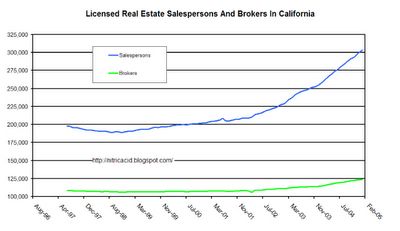
 The white, blue, and black barrels holding the plates are 35, 70 and 100 yards away, respectively.
Audacity is a full-featured open-source audio recording software. It came in especially handy for our experiment since it features a spectral waveform analysis tool that helped us tease out the impact sounds from other reflected sounds on the range. Here is the waveform and spectrum from a Marlin 30-30 lever action rifle impacting the first metal plate 35 yards away:
The white, blue, and black barrels holding the plates are 35, 70 and 100 yards away, respectively.
Audacity is a full-featured open-source audio recording software. It came in especially handy for our experiment since it features a spectral waveform analysis tool that helped us tease out the impact sounds from other reflected sounds on the range. Here is the waveform and spectrum from a Marlin 30-30 lever action rifle impacting the first metal plate 35 yards away:
 Here's an mp3 of the sound.
The bullet’s ringing impact on the metal plate is heard clearly and is discerned in the spectrogram by the persistence of audio peaks at certain frequencies as the ringing trails off. The other peaks in the spectrogram are echoes of the shot and impact bouncing off other objects in the field.
Using the select feature in Audacity, it is possible to zoom in and measure the precise instant the bullet left the barrel, and when the impact sound returned to the microphone. For the above example, a time of 0.1575 seconds was recorded.
Now, a word about the speed of sound. According to Wikipedia, the speed of sound in air varies only with temperature according to this formula:
Speed (m/s) = 331.5 + 0.6*Temp(°C)
So for our purposes, the flight time of the bullet would be the total time minus the time it took the sound to come back from the target. We then divide the distance by the flight time:
Bs = Dtarget /(Ttotal – (Dtarget / (331.5+0.6*°C)))
where Bs is the speed of the bullet, Dtarget is the distance to the target, and Ttotal is the total time from when the gun was fired and the impact was heard.
Since we were at a high altitude on a clear, sunny day, the air temperature was changing during the experiment. Since we didn’t have a thermometer with us, we got weather station data from Mesowest and built a temperature curve:
Here's an mp3 of the sound.
The bullet’s ringing impact on the metal plate is heard clearly and is discerned in the spectrogram by the persistence of audio peaks at certain frequencies as the ringing trails off. The other peaks in the spectrogram are echoes of the shot and impact bouncing off other objects in the field.
Using the select feature in Audacity, it is possible to zoom in and measure the precise instant the bullet left the barrel, and when the impact sound returned to the microphone. For the above example, a time of 0.1575 seconds was recorded.
Now, a word about the speed of sound. According to Wikipedia, the speed of sound in air varies only with temperature according to this formula:
Speed (m/s) = 331.5 + 0.6*Temp(°C)
So for our purposes, the flight time of the bullet would be the total time minus the time it took the sound to come back from the target. We then divide the distance by the flight time:
Bs = Dtarget /(Ttotal – (Dtarget / (331.5+0.6*°C)))
where Bs is the speed of the bullet, Dtarget is the distance to the target, and Ttotal is the total time from when the gun was fired and the impact was heard.
Since we were at a high altitude on a clear, sunny day, the air temperature was changing during the experiment. Since we didn’t have a thermometer with us, we got weather station data from Mesowest and built a temperature curve:
 The only thing left to do was to listen to all the recordings and get the impact times. Here’s a table of our final results:
The only thing left to do was to listen to all the recordings and get the impact times. Here’s a table of our final results:
 A copy of the whole spreadsheet is available at the bottom.
Conclusion
Obviously, we have a lot of work to do. The first challenge, of course, is finding a private range. Since we were shooting with friends, it was tough to keep the whole range quiet while we ran our experiment. Another thing we discovered was larger targets make for louder impacts. It also might be easier to bring a small digital voice recorder to the range instead of a laptop, and do the math at a later time.
We did show that by through a simple recording technique, it is possible to find the speed of bullets at short and long distances.
References
Excel Spreadsheet of above calculations
Audacity
Wikipedia
Mesowest
A copy of the whole spreadsheet is available at the bottom.
Conclusion
Obviously, we have a lot of work to do. The first challenge, of course, is finding a private range. Since we were shooting with friends, it was tough to keep the whole range quiet while we ran our experiment. Another thing we discovered was larger targets make for louder impacts. It also might be easier to bring a small digital voice recorder to the range instead of a laptop, and do the math at a later time.
We did show that by through a simple recording technique, it is possible to find the speed of bullets at short and long distances.
References
Excel Spreadsheet of above calculations
Audacity
Wikipedia
Mesowest

